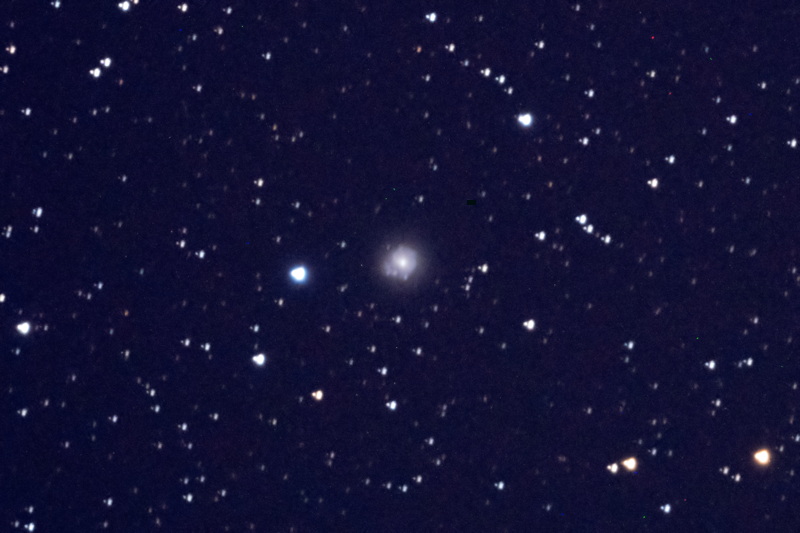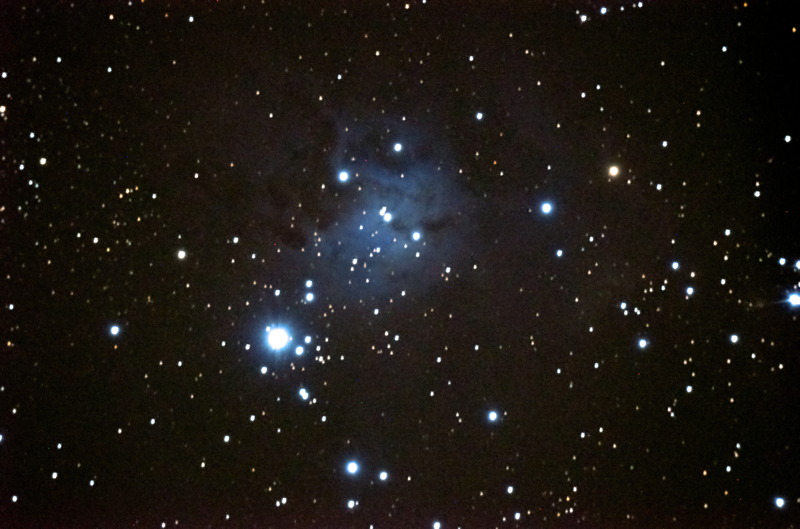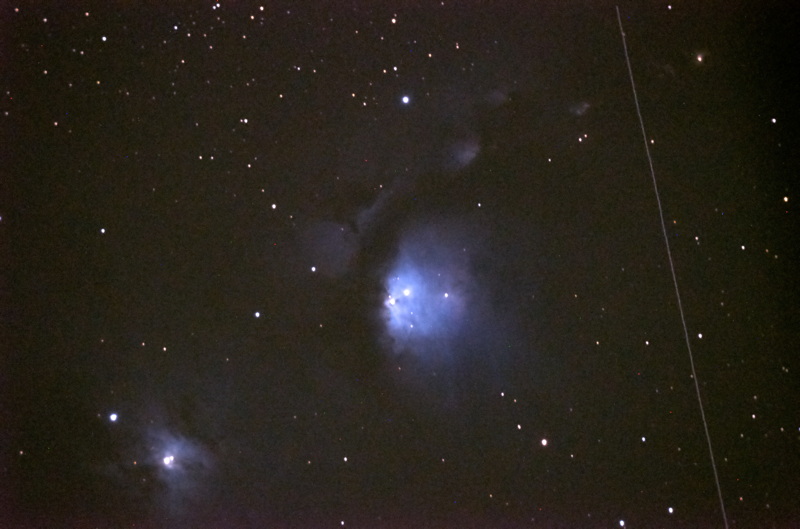
D7000: NGC278, M79, NGC1999, NGC1977, M78, NGC2537, IC2233, NGC2440
Posted: 20 January 2012
The observatory was opened Thursday, 19 January, at 1807 MST, 65°F, to a clear sky. The plan for the night was to image several of the DSOs that I had observed on the previous session. But I started with some quick looks at Venus at 77X and Jupiter at 77X and 206X. Jupiter's four Galilean Moons were visible. I then began imaging preparations. I SYNCed on the star Shedir (Alpha Cas) for the first target in Cassiopeia: NGC278, a small galaxy. I then slewed the 8" telescope to NGC278 and began waiting for twilight to end. At 1842 MST, the galaxy became faintly visible in the 26mm (77X) eyepiece. I attached the D7000 DSLR at prime focus + Off-Axis Guider. I used Shedir for a focus test with the Bahtinov Mask. I began the night's DSO imaging at 1905 MST. As always, I did framing test exposures, looking for good guidestars. This night I had pretty good luck locating guidestars. But I had some bad luck as well: twice, the neighbor to the north turned on his two extremely bright, unshielded, horizontally aimed (right at the observatory), floodlights. He did turn them off each time a few minutes later. Thank you!
This is the NGC278 galaxy, with a 5 minute, ISO 6400, guided exposure, cropped:

Guiding turned out to not be very good, so I plan to redo the image on the next session.
This is M79, a globular cluster, 30 seconds, ISO 6400, unguided, slightly cropped:

NGC1999, nebula, 5 minutes, ISO 6400, guided exposure, slightly cropped:

NGC1977, nebula (near M42 in Orion), 3 minutes, ISO 6400, guided exposure, cropped:

NGC2264, Cone Nebula and the Christmas Tree Cluster, 5 minutes, ISO 6400, guided exposure, full-frame:

M78, nebula, 5 minutes, ISO 6400, guided exposure, full-frame:

As with many images of DSOs in Orion, passing satellites may be captured, like I did on that one.
NGC2537, Bear Paw Galaxy (left), IC2233 (galaxy; right), and a few other small faint galaxies, 5 minutes, ISO 6400, guided exposure, full-frame:

My last DSO for the night was NGC2440, a small planetary nebula. This is a cropped, 3 minute, ISO 6400, guided exposure:

Love that I was able to capture the colors in the nebula. Note: all of the images were edited in Aperture and then processed in Neat Image for noise reduction.
I ended imaging at 2217 MST. I then viewed NGC2440 at 77X. At 206X, some structure and the oval shape were visible. I next viewed Jupiter; only two moons were now visible. At 206X, some details in the clouds were clearly seen.
At 2235 MST, I viewed the star Canopus, almost due south. Canopus is the second brightest star (after Sirius), and is the southern-most bright star visible from Cassiopeia Observatory. It is Magnitude -0.7 at a Declination of -52° 41' 45".
At 2241 MST, I took a quick look at Mars, 77X, which had just appeared over the hill to the east. But it was too low for any details to be seen.
Closed the observatory at 2253 MST, 51°F. A super night of imaging at Cassiopeia Observatory.
Go to the previous report.
Return to the Cassiopeia Observatory Welcome Page.